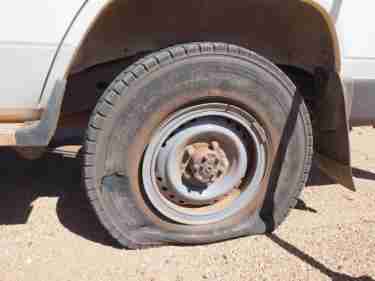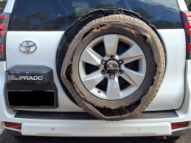

Flat Tyres on 4WDs
Have you noticed the screws, nails or other object in the tyre before hitting the highway and travelling at speed, then firstly this may not have happened. Or if you had noticed it was slowly going flat then the tyre could have been changed, repaired and not needed to be replaced.
Generally if you do a close inspection of the tyres during the pre start check then it is easy to miss something in the tyre. If our pressure is lower then it should be for highway travel due to an embedded object or something working its way further into the tyre, then it will go flat during the journey. So it can easily be missed.

Most of use are not able to determine what the pressure is in our tyres through a visual glance, so unless we use a tyre gauge and check them all its hard to tell the difference between 28 and 35 etc and everything in between.
If we are driving within the upper range of posted speed limits and we suddenly loose air pressure then more times than not, by the time we have stopped the tyre will have destroyed itself. If the tyre pressure was already lower that recommended then the additional friction created can also cause the tyre to literally explode and once again, looks like the photo above.
Around town at lower speeds we may be lucky in that the tyre simply does go flat because we can stop within a shorter distance and possibly the tyres are not as hot as they get from higher speed driving and therefore stay together. Check out driving courses
A sidewall cut such as this one means the tyre stays intact but it is not something that can be repaired so it will need to be replaced. This is often caused by sharp rock edges slicing across the tyre and this is the result. There are views that higher tyre pressure can cause this as opposed to a slightly lower pressure, once again there are many factors that come into play here and this discussion can get very confusing very quickly with a range differing opinions. We have mentioned the impact of different tyre pressures and driving in other blogs, so I won’t repeat anything here. The tyre still needs to be changed regardless.
Why not come and do a 2 day 4x4 course or a 1 day refresher with us and we can at least run you through the practical aspects of tyre changing and also discuss how tyre pressure affects our driving. It’s both fun and highly informative as flat tyres will probably cause you the most grief when out and about in your 4x4. Look at 4WD training in Darwin